Are Your Old Terracotta Pipes a Ticking Time Bomb? A Guide for Sydney’s Heritage Homeowners
Did you know that terracotta pipe relining is one of the most effective ways to protect Sydney’s heritage homes from costly blocked drain emergencies? In fact, up to 60% of plumbing issues in older Sydney properties stem from failing terracotta sewer pipes.
If your home was built before the 1980s, your drains could already be at risk — even if you haven’t noticed the warning signs. In this guide, we’ll explain why old terracotta pipes are prone to cracking and collapse, and how modern pipe relining can restore their strength without damaging your home’s character or requiring excavation.
Whether you’re living in a Federation cottage or an Art Deco apartment, this guide will help you understand the terracotta pipe problems Sydney homeowners face — and how to fix them for good with a lasting, no-dig solution.
A Startling Truth About Terracotta Pipes Problems in Sydney Homes
“In Sydney, up to 60% of blocked drain emergencies in heritage homes are traced directly to failing terracotta sewer pipes,” - Streamline Drains and Pipelines
If you’re the proud owner of a character-filled Sydney home, your plumbing is likely under threat from next-level wear and tear. Terracotta pipes—known for their brittle, porous nature—were the standard for sewer and drainage systems for much of the last century. Due to their age and outdated design, these old clay pipes are a leading cause of frequent blocked drain emergencies, recurring sewer line issues, and unexpected water damage.
The costs are not just financial: they can also impact your precious gardens, heritage tiling, and the very fabric of your property. Sydney homeowners need to be proactive to stop severe terracotta pipes problems before they spiral into massive repairs and disruptions.
Understanding the risks is the first step to protecting your investment.
What You’ll Learn in This Guide to Terracotta Pipes Problems Sydney
-
The nature and vulnerabilities of terracotta pipes in Sydney
-
Warning signs of blocked drain and sewer pipe issues
-
Why tree root intrusion is rampant in terracotta drains
-
Modern inspection techniques for old Sydney homes
-
Repair options: pipe relining versus pipe replacement
-
Cost, longevity, and impact on heritage gardens and tiled floors
-
How to book a free pipe health check in Sydney
Understanding Terracotta Pipes Problems in Sydney Heritage Homes
How Terracotta Sewer Pipes Were Used in Sydney Homes
Sydney’s iconic heritage properties, particularly those built before the late 1970s, almost always rely on terracotta pipes for their underground sewer and stormwater drainage systems. These clay-based pipes were the preferred standard for decades due to their low initial cost and easy local manufacturing. You’ll often find them in short, awkward segments running beneath gardens, patios, and even beneath century-old tiled bathroom floors. While they once did the job, time has revealed serious flaws: their inflexible, brittle nature makes them especially vulnerable to age-related wear and tear. With Sydney’s clay-rich soils and shifting grounds, the joints and seams of these pipes are prone to misalignment and cracking—opening the door for tree roots and other hazards. It’s no surprise that property owners in Sydney are seeing more blocked drain and sewer pipe problems as homes age.
For homeowners dealing with persistent blockages or slow drains, understanding the specific causes—such as tree root intrusion or pipe misalignment—can be crucial. If you want a deeper look at how these issues are diagnosed and resolved, our ultimate guide to pipe relining has all the answers. Or check out this quick article on blocked drains and effective repair solutions tailored for Sydney properties.
The Structure of Terracotta Pipe and Why It Fails
Terracotta sewer pipes are made from fired clay or terracotta segments, typically joined end to end with cement mortar. Although aesthetically fitting with heritage homes, their structure lacks the flexibility and resilience needed to withstand decades of ground shifts and environmental changes. Over time, drain pipes can develop tiny fractures at the joints—which soon widen under pressure from soil movement, shifting moisture, and expanding tree roots nearby. These pipes are also more porous than modern PVC alternatives, allowing water to seep into the ground and for roots to “sniff out” entry points. Once moisture escapes, roots quickly follow, and even small gaps can invite serious root intrusion or blocks. For many Sydney heritage homes, these old sewer lines are a disaster waiting to happen—making regular inspections and upgrades vital.
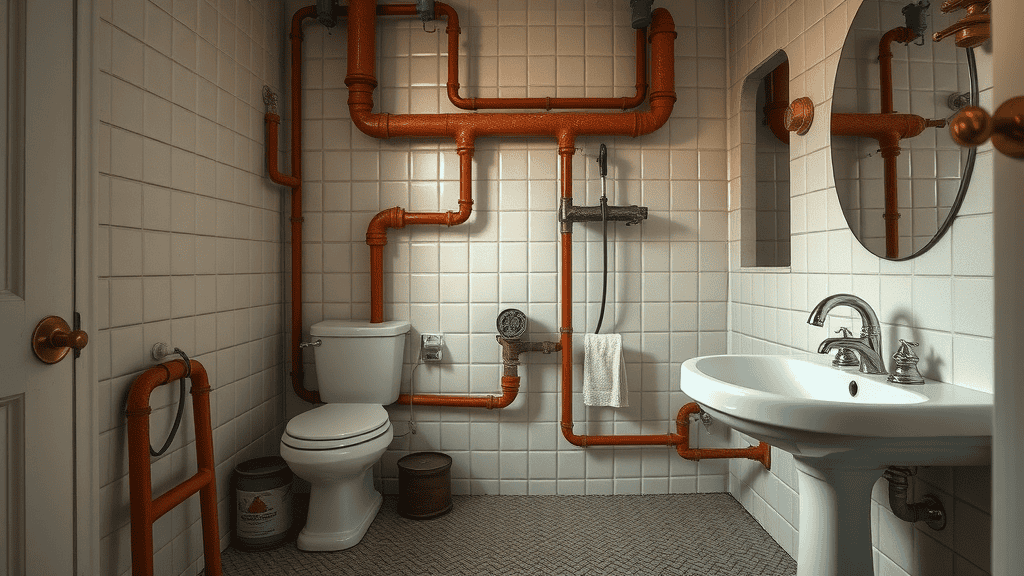
Porosity and Brittle Joints: Major Terracotta Pipes Problems Sydney Faces
Perhaps the biggest weakness of terracotta pipe is its double threat of porosity and brittleness. Unlike flexible PVC or durable cast iron, terracotta is inherently fragile and absorbs moisture over time. This creates microcracks that allow further ingress of water and tree roots, intensifying the risk of leaks or breakages. Joints—once secured by cement—are now prime targets for disintegration, letting sewer water escape and unsanitary groundwater seep in. As a direct result, drainage systems in older Sydney homes become more unpredictable, generating frequent drain problems and damaging both interiors and landscaping. The cumulative damage can threaten the very heritage features that make your property unique.
The Hidden Costs of Ignoring Terracotta Pipes Problems in Sydney
Ignoring early warning signs of terracotta pipes problems in your Sydney heritage home can quickly escalate from a minor inconvenience to a significant financial burden. Beyond the obvious repair costs, there are numerous hidden expenses and long-term consequences that can impact your property’s value and your family’s well-being. Firstly, persistent leaks can lead to costly water damage to foundations, subfloors, and internal heritage finishes, requiring extensive restoration work that far outweighs the cost of proactive pipe repair. Secondly, chronic blockages and raw sewage overflows can create unsanitary conditions, attracting pests and potentially necessitating professional biohazard clean-up services, adding another layer of unexpected expense. Furthermore, repeated emergency plumbing call-outs for recurring blocked drains are expensive in themselves, compounding over time. Long-term, neglected terracotta sewer pipe damage Sydney can undermine your garden’s integrity, destroy established landscaping, and even reduce your property’s overall market appeal. Proactive inspection and pipe relining can save you tens of thousands of dollars and preserve your home’s unique charm.
Common Causes of Terracotta Pipes Problems in Sydney
Ground Movement and Cracking of Drain Pipes
Sydney’s unique blend of clay soils, rainfall variability, and urban development means the ground is always in slight motion. These shifting conditions place pressure on underground pipes, especially fragile terracotta pipes. With little flexibility, these pipes crack under strain, particularly at joints and corners. Even subtle ground movement can cause misalignment, which lets stormwater and waste escape—and makes it easier for roots to invade. A cracked or displaced drain pipe will quickly lead to sewer pipe problems, undermining nearby patios or garden beds, and increasing the chance of costly water ingress into your home’s foundations. Regular drain inspection and early pipe repair are critical for any Sydney homeowner with a pre-1980s property.
Tree Root and Tree Roots Intrusions in Terracotta Pipes
If you cherish your mature gardens or old trees, be aware: tree root intrusion is the top cause of terracotta pipes problems Sydney sees each year. Tree roots are naturally attracted to the moisture wafting from porous or leaking clay pipes. Once a root tips finds a hairline crack or weak joint, it enters and rapidly grows inside the pipe, drawn by the endless water supply. This can create a gnarled web that blocks the pipe, causes backups, or forces the entire line to collapse. Homeowners often notice slow drains or repeated blockages, particularly after heavy rain or drought. Preventing tree roots from destroying your vintage sewer lines means acting at the first sign of trouble, or better yet, inspecting your pipes before symptoms appear.
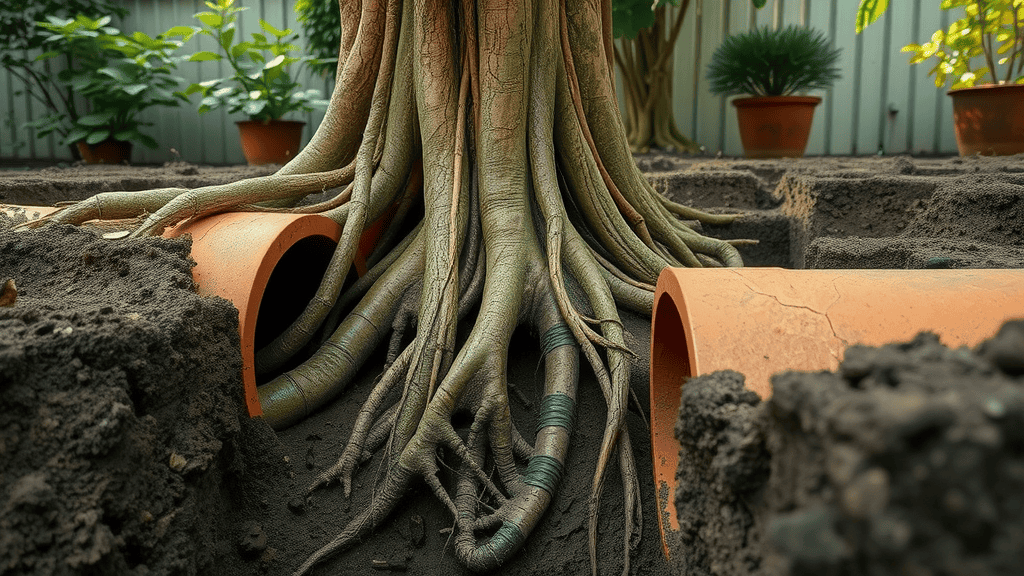
Blocked Drain Emergencies: Signs to Watch For
Slow drains
Unpleasant odours
Overflowing gully
Backup in toilets and sinks
The earliest warning signs of a blocked drain in terracotta pipes are subtle but telling. You may notice water taking longer to empty from your sink, bathtub, or toilet. Persistent foul odours around your drains often indicate hidden blockages or leaks letting sewer gases escape. Overflowing gullies in your garden or driveway, or unexpected backups in indoor plumbing, signal a near-complete drain pipe obstruction. Because these problems often grow from inside brittle terracotta pipes, ignoring them means minor issues will quickly turn into plumbing emergencies—potentially flooding heritage interiors or damaging garden landscapes. Don’t risk it: a professional drain inspection is the safest move for owners in Sydney’s older suburbs.
Modern Diagnosis: CCTV Drain Camera and Drain Pipe Assessment
The Role of CCTV Drain Camera in Detecting Terracotta Pipes Problems
Advances in drain inspection are a game-changer for Sydney property owners. A CCTV drain camera allows plumbers to get a real-time, high-definition look inside your terracotta pipes without any digging. Through a small access point, a flexible camera snakes along the length of the sewer pipe, transmitting clear video of cracks, intruding roots, and blockages. This non-invasive method reveals the true cause of recurrent drain problems—whether due to tree root intrusion, cracks, or collapsed sections. With recorded footage, Sydney plumbers can accurately map out the problem areas, recommend the best pipe repair techniques, and provide transparent quotes based on real pipe conditions. For heritage homes with gardens or tiles worth protecting, it’s an indispensable first step to any repair or upgrade.
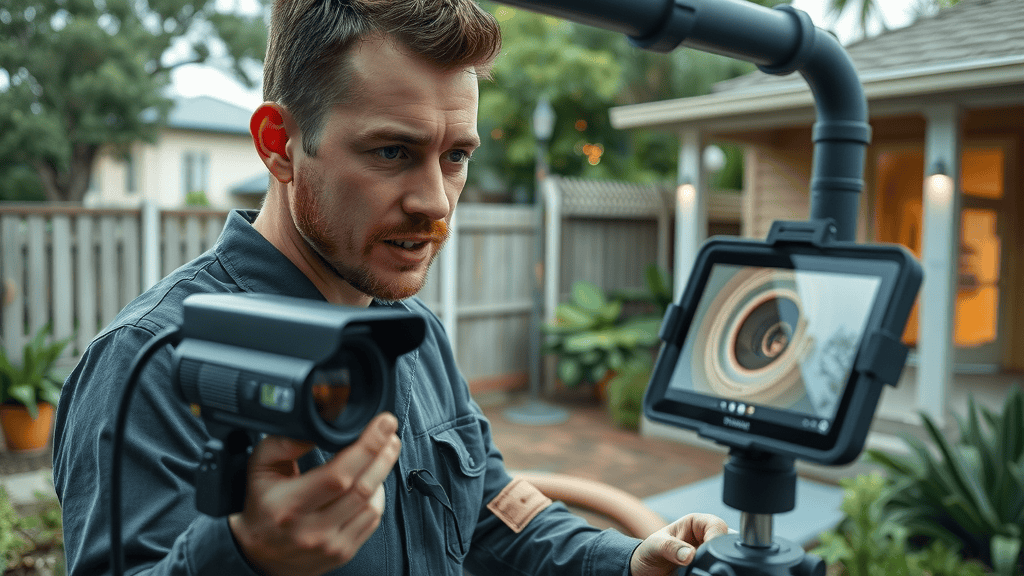
How a CCTV Drain Camera Locates Hidden Tree Roots and Sewer Pipe Damage
A CCTV drain camera inspection does more than just show a blockage. It pinpoints the exact location and extent of tree roots, cracks, and debris—helping avoid unnecessary digging across your whole garden. The camera’s LED light illuminates the pipe interior, revealing everything from greasy build-up to collapsed sections. Video footage can be stopped, zoomed, and mapped, so your chosen Sydney plumber knows the precise depth and angle of each defect. This high-tech approach minimizes guesswork and means any remedial works target only the affected drain pipe section. For Sydney homeowners, it’s peace of mind that comes with transparent, visual proof and a clear plan forward.
Fixing Terracotta Pipe and Sewer Pipe Problems Sydney Homeowners Face
Traditional Repairs vs. Modern Pipe Relining for Terracotta Pipes
Historically, fixing damaged terracotta pipes required extensive excavation, breaking up gardens, patios, and often historic tiles inside bathrooms or laundries. Not only was this labour-intensive and disruptive, but it created huge mess and cost. Today, pipe relining offers a breakthrough alternative. Rather than remove and replace all the terracotta, a special resin-soaked liner can be inserted and cured in place using steam or light. This creates a new, seamless “pipe within a pipe” that’s stronger than the original, sealing all cracks and keeping roots at bay—without ever needing to dig up your lawn or floors. The choice between traditional replacement and relining should consider your home’s heritage features, desired timeframes, and long-term maintenance costs. See below for a quick comparison:
|
| Comparison of Traditional Replacement vs. Pipe Relining for Terracotta Pipes |
Aspect | Traditional Replacement | Pipe Relining |
|---|---|---|
Cost | $$$ (higher, due to labour and restoration) | $$ (lower overall, often less than half) |
Disruption | Major—requires digging, destroys gardens/tiles | Minimal—no digging, garden and tiles intact |
Longevity | 30–50 years (if high-quality PVC used) | 50+ years (seamless and root-resistant) |
Environmental Impact | High (landfill waste, soil disturbance) | Low (little waste, preserves landscape) |
Pipe Relining: The Ideal Solution for Protecting Heritage Gardens and Tiled Floors
For many, the true value of a heritage Sydney home lies in its original gardens, landscapes, and interiors. Pipe relining delivers a forward-thinking, non-invasive fix that lets you keep your property’s charm while solving terracotta pipes problems for good. No excavators, no busted heritage tiles, and no loss of precious plants—just a new sewer line created inside the old one. This technique is especially suited to garden-heavy blocks and homes with irreplaceable finishes. As more Sydney property owners learn about pipe relining, it’s clear why it’s the most heritage-friendly upgrade. It’s also quicker, often finished within a day compared to weeks of traditional works.
“Pipe relining saved our 1920s home—and our prized garden—from excavation and chaos.”
– Sydney Heritage Homeowner
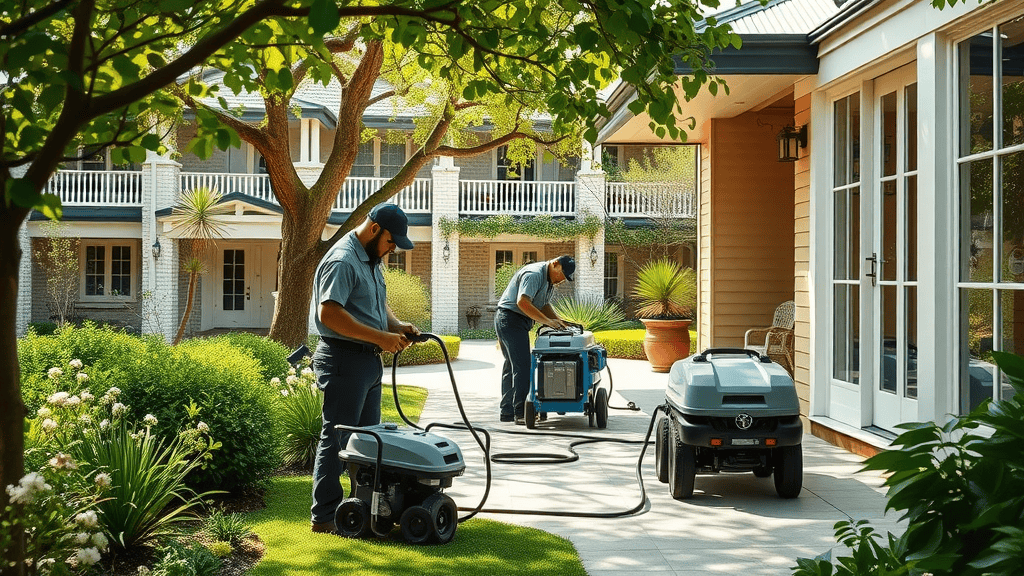
People Also Ask About Terracotta Pipes Problems Sydney
When did they stop using clay sewer pipes in Australia? Clay or terracotta pipes were the most common material for sewer and stormwater lines in Australia up until the late 1970s. By the early 1980s, most new builds switched to PVC or similar plastic pipes, as these are longer-lasting, root-resistant, and much less prone to cracking or leaking. If your Sydney home dates to the 1980s or earlier, there’s a high chance your drainage system still includes old terracotta pipes. How long do terracotta sewer pipes last? With good installation and gentle soil conditions, traditional terracotta pipes can last up to 50 years. However, their true lifespan in Sydney is usually shorter due to frequent ground movement, tree root intrusion, and leaking joints. In practice, many homeowners face costly repairs or replacements as early as 30–40 years—especially where large trees or poor drainage exist. Regular CCTV inspections are the best way to assess remaining pipe life. How to fix a terra cotta sewer? The modern, preferred fix is pipe relining: a new liner is installed within the old pipe to seal cracks and block future root growth. In cases of severe pipe collapse, short sections may still need replacement, but relining avoids most digging and is the best way to renew pipes under heritage gardens or tiled floors. Your plumber will use a CCTV drain camera to recommend the right solution. Are terracotta pipes safe? Old terracotta pipes are not hazardous to health, but their leaks and blockages can cause unsanitary conditions, smells, or even undermine your building structure. Weak joints and water seepage can foster mould, pests, and promote costly property damage. Upgrading or relining your system eliminates these safety risks and ensures your home meets modern plumbing standards.Key Takeaways: Preventing Terracotta Pipes Problems in Sydney
- Most heritage Sydney homes have terracotta pipes vulnerable to blockage and root intrusion
- Pipe relining is the least intrusive, most heritage-friendly fix
- Modern CCTV drain camera inspections reveal problems before emergencies strike
- Regular checks can prevent costly damage to gardens and interiors
Frequently Asked Questions About Terracotta Pipes Problems Sydney
Can old terracotta pipes be relined, or must they always be replaced?
In most cases, pipe relining is suitable for terracotta pipes—even those with cracks or small displacements. The liner forms a seamless barrier inside, preventing leaks and blocking tree roots. Only totally collapsed or crushed sections must be physically replaced. A CCTV drain camera inspection will confirm the best approach for your specific pipes.Will insurance cover blocked drain repairs in heritage Sydney homes?
Home insurance policies vary, but in many cases, repairs due to age, wear, or gradual damage (such as tree root intrusion in terracotta pipes) are not covered. Damage from a sudden and unexpected event may be considered, but upgrades from clay to PVC or relining are usually out of pocket. Check your policy, and ask your Sydney plumber for advice before starting repairs.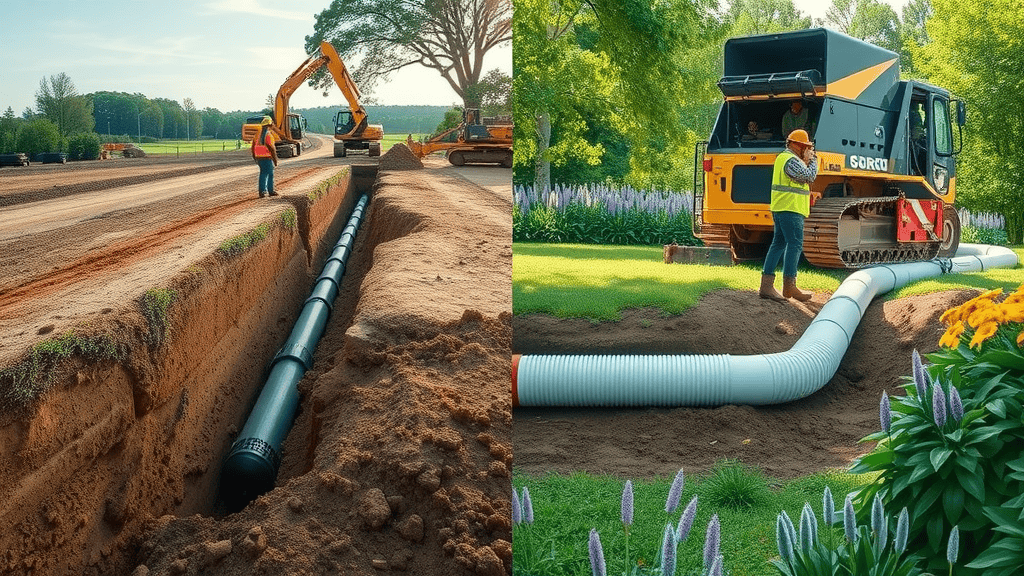
Conclusion: Future-Proofing Your Sydney Home from Terracotta Pipes Problems
“Don’t wait for a blocked drain disaster—heritage homes deserve a proactive approach.”
Protect your home’s character, value, and unique features. Invest in modern solutions for your terracotta pipes problems Sydney before disaster strikes.
If you’re ready to take the next step in safeguarding your heritage property, consider learning more about the broader benefits and long-term peace of mind that come with professional pipe relining. Discover how Sydney’s leading specialists leverage decades of expertise to deliver seamless, non-invasive solutions that preserve both your home’s value and its unique character. For a deeper dive into advanced techniques and the full spectrum of services available, visit the Sydney pipe relining specialists’ resource hub and unlock the knowledge you need to future-proof your property.
Own an Older Sydney Home? Protect Its Character with a Free Pipe Health Check
If you own an older home in Sydney, you understand the importance of preserving its unique character and value. A crucial, often overlooked, aspect of maintaining these properties involves the underlying drainage system. Scheduling a complimentary pipe health check can help assess the condition of your terracotta drains, allowing you to address minor issues before they escalate into major emergencies. This proactive approach can provide significant peace of mind for those who cherish their heritage property.
For Sydney homeowners with terracotta pipes, gaining insight into potential problems and available solutions is incredibly beneficial. Many older properties face common issues like root intrusions, where tree roots penetrate the pipes, or the natural brittleness and scaling that can occur over time in clay pipes. Understanding these challenges underscores why regular, proactive maintenance is so important. When considering upgrades, the advantages of modern PVC pipes are often discussed, detailing how these newer systems can offer a durable alternative to traditional terracotta. Exploring these maintenance and upgrade options can provide valuable insights for effectively preserving the plumbing infrastructure of your heritage home.

